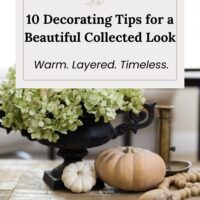Love the look of a layered, personal home but worried it’ll feel messy? Learn how to achieve a collected look without clutter using simple, intentional styling tips.
There’s something so charming about a home that feels collected—layered with personality, filled with meaningful pieces, and rich in visual interest. But there’s a fine line between collected and cluttered.
In this post, I talk about the mistake of recreating a showroom — because while those rooms might photograph beautifully, they rarely reflect how real people live. Showroom spaces lack soul. Instead of copying what you see in catalogs or online, focus on designing a home that feels personal, authentic, and comfortably layered.
A collected look isn’t built overnight—it’s curated moment by moment.
-Kim (Tidbits&Twine)
Think of your home as a visual journal. It should tell the story of who you are, where you’ve been, and what you love. That means mixing old with new, displaying treasures alongside everyday pieces, and allowing your space to evolve naturally over time.
The goal is a home that feels intentional, relaxed, and uniquely you. Here’s how to get that beautifully layered look—without letting it slip into clutter.
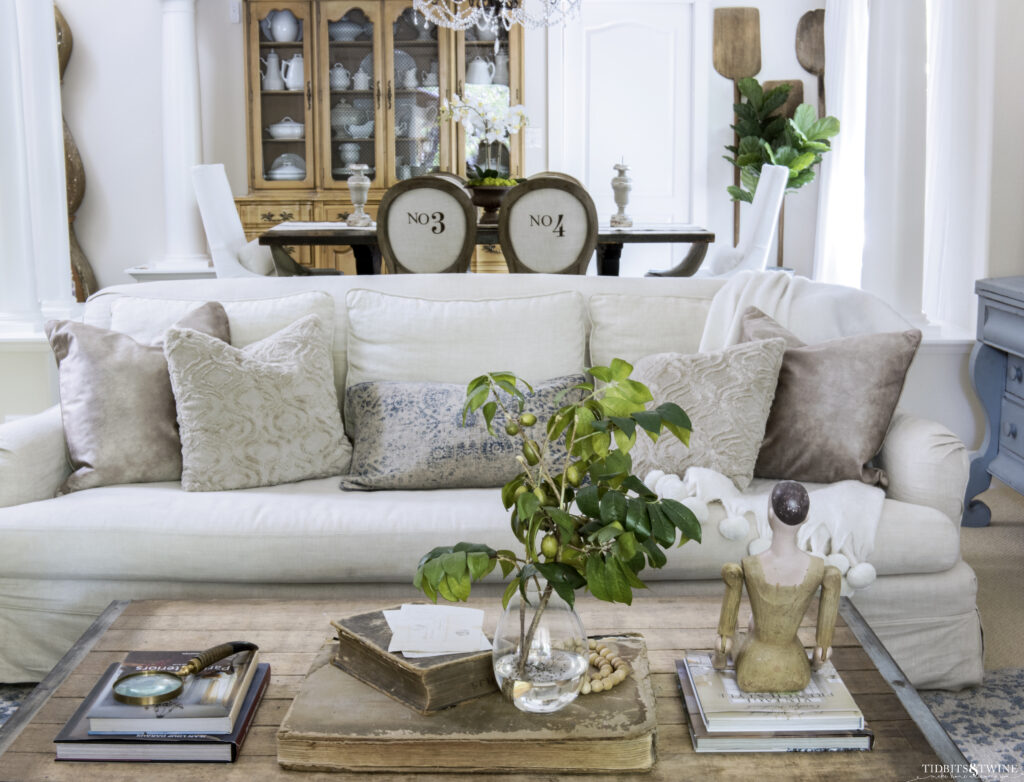
What is a Collected Look?
At its core, a collected home tells your story. It’s where old meets new, where each piece—whether passed down, thrifted, or discovered on a whim—adds a layer to the narrative. These spaces have depth, warmth, and character, filled with textures and timeworn finishes that draw you in and invite you to stay awhile. But a true collected look isn’t just about having lots of things—it’s about having the right things, chosen with intention and styled with care.
A collected home doesn’t happen overnight—it’s built over time, one meaningful piece at a time.
-Kim @ Tidbits&Twine
A well-styled collected home strikes a beautiful balance between curated and casual. It feels lived-in, not overly polished. Personal, but not chaotic. It’s this harmony of pieces with history, heart, and purpose that brings soul to a space—and keeps it from veering into visual overload.
Clutter Is in the Eye of the Beholder
Before we dive into the how-to’s, let’s pause for a moment to talk about what “clutter” actually means—because the truth is, it’s completely subjective.
To a minimalist, my layered shelves might feel overwhelming. To a maximalist, they might seem sparse! That’s the beauty of design—it’s personal. So while this post is about creating a collected look without visual overwhelm, it’s not about stripping away the soul of your home. Use these tips as tools to find your version of balance—whatever that looks like to you.
Why the Collected Look Can Feel Cluttered
While the collected look is beautiful and full of personality, it can easily veer into cluttered territory if you’re not careful. Here’s when it starts to feel off:
- There’s no unifying color palette or style
- Every surface is packed full
- There’s no variation in scale, texture, or height
- Too many smalls, not enough breathing room
- No rhythm or visual pauses
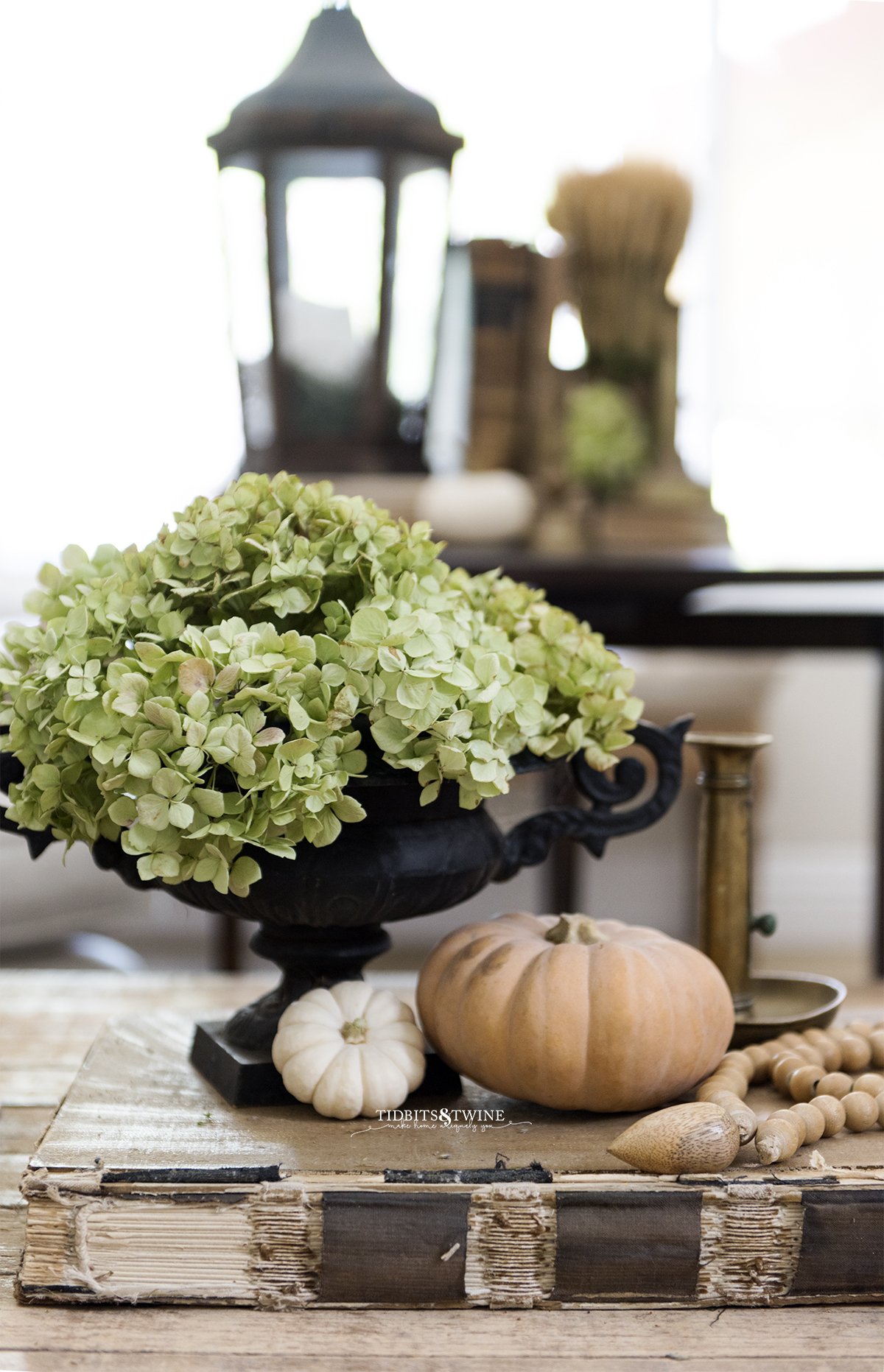
The Secret? Edit with Purpose.
The key to mastering the collected look is understanding what to include, where to put it, and how much is enough. Here’s how to get there:
10 Tips to Create a Collected Look Without Clutter
1. Start with a Clean, Neutral Base
A neutral backdrop allows your treasures to shine. Whether it’s a console table, bookshelf, or vignette, aim to keep your background color palette soft and subdued. Whites, soft taupes, and muted grays provide a visual reset that prevents your collections from feeling chaotic.
Now, I know this might sound a little controversial as a first step—especially if you’re a wallpaper lover like me. So let me say this: I’m all for pattern and personality on the walls! Just be intentional. If you’re using wallpaper or a bold background, make it part of the styling equation. Think about how your decor interacts with the backdrop, not just the objects themselves.
2. Forget Showroom Perfection
Catalogs are inspiring, but they’re also staged. Real homes are layered, lived-in, and full of personality. As I mention in 8 Decorating Mistakes, copying a showroom setup might feel “safe,” but it often results in a space that lacks soul.
Instead, borrow ideas and layouts—but swap in meaningful, personal touches. A vintage mirror from your travels, a quirky sculpture, a basket you’ve had for years…these are the things that tell your story and make your space feel truly yours.
3. Be Intentional with Every Piece
A collected home isn’t about having everything out at once—it’s about curating what’s meaningful. Display items that reflect your personality, tell a story, or bring you joy. And remember: just because you love it doesn’t mean it has to be out all the time.
4. Group, Don’t Scatter
One of the fastest ways to go from curated to cluttered is by spreading small objects evenly across every surface. Instead, corral items into visual groupings using trays, risers, or stacks of books. This gives the eye a place to rest and makes your styling feel intentional.
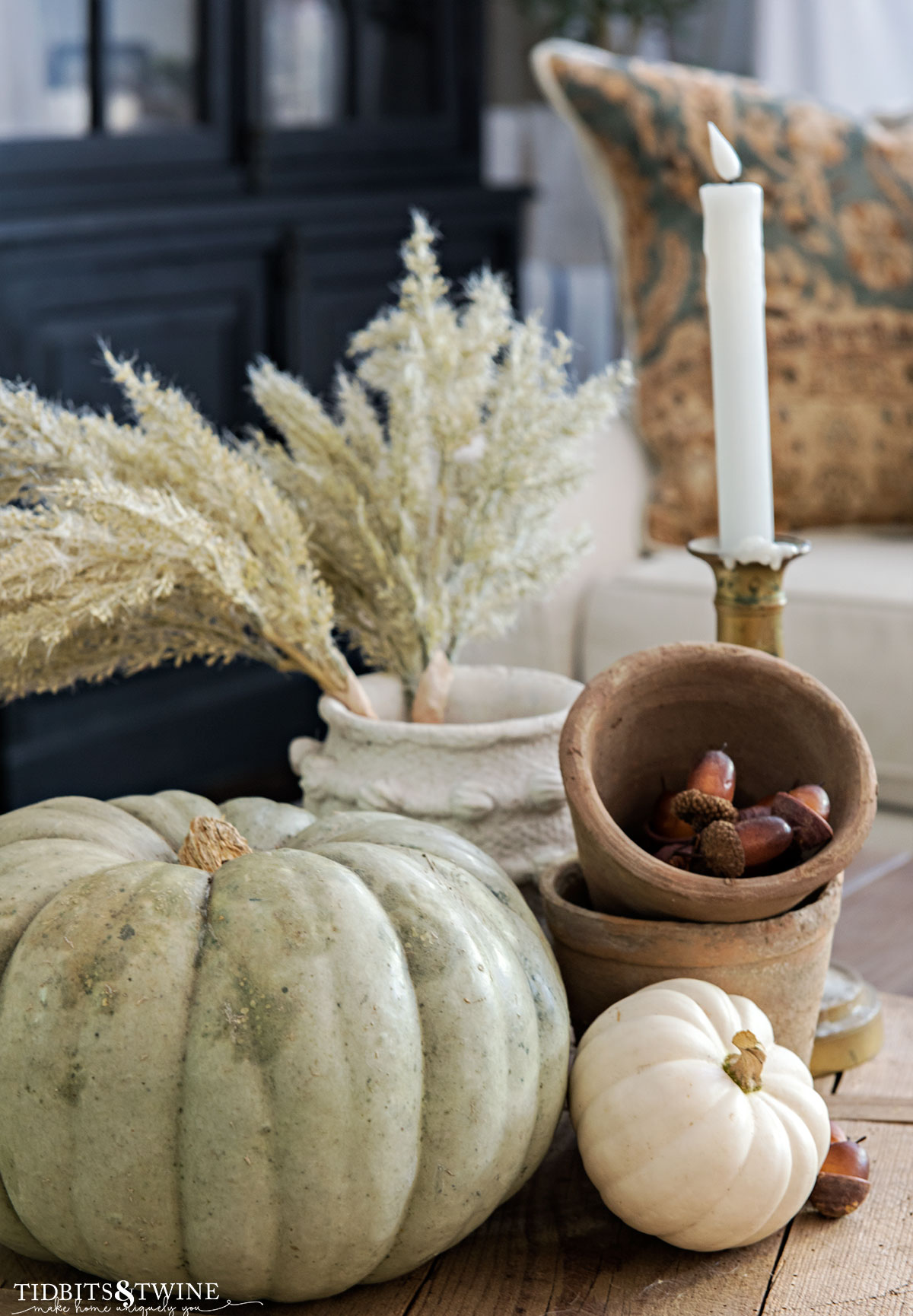
5. Mix Heights, Shapes, and Textures
A collected look should have layers of contrast. Mix tall and short objects, round and angular shapes, smooth and rough textures. This variation adds depth and interest without overwhelming the eye.
For example, pair a vintage wood box with a sleek ceramic vase and a piece of driftwood or aged metal.
6. Style It, Then Step Away
Once you’ve styled a surface—whether it’s a bookshelf, coffee table, or entry console—give yourself permission to pause. Live with it for a day. Come back with fresh eyes and see how it feels. Sometimes, what seemed “just right” at first glance might now feel a bit too busy…or maybe it needs one more textural element to feel complete.
Good styling takes time—and a little distance can help you edit with clarity and confidence.
-Kim @ Tidbits&Twine
7. Leave Breathing Room
Negative space is just as important as the pieces you choose. It gives your eye a chance to pause and appreciate the beauty of what is there. Don’t feel the need to fill every shelf, corner, or tabletop. A bit of restraint goes a long way.
More doesn’t always mean better.
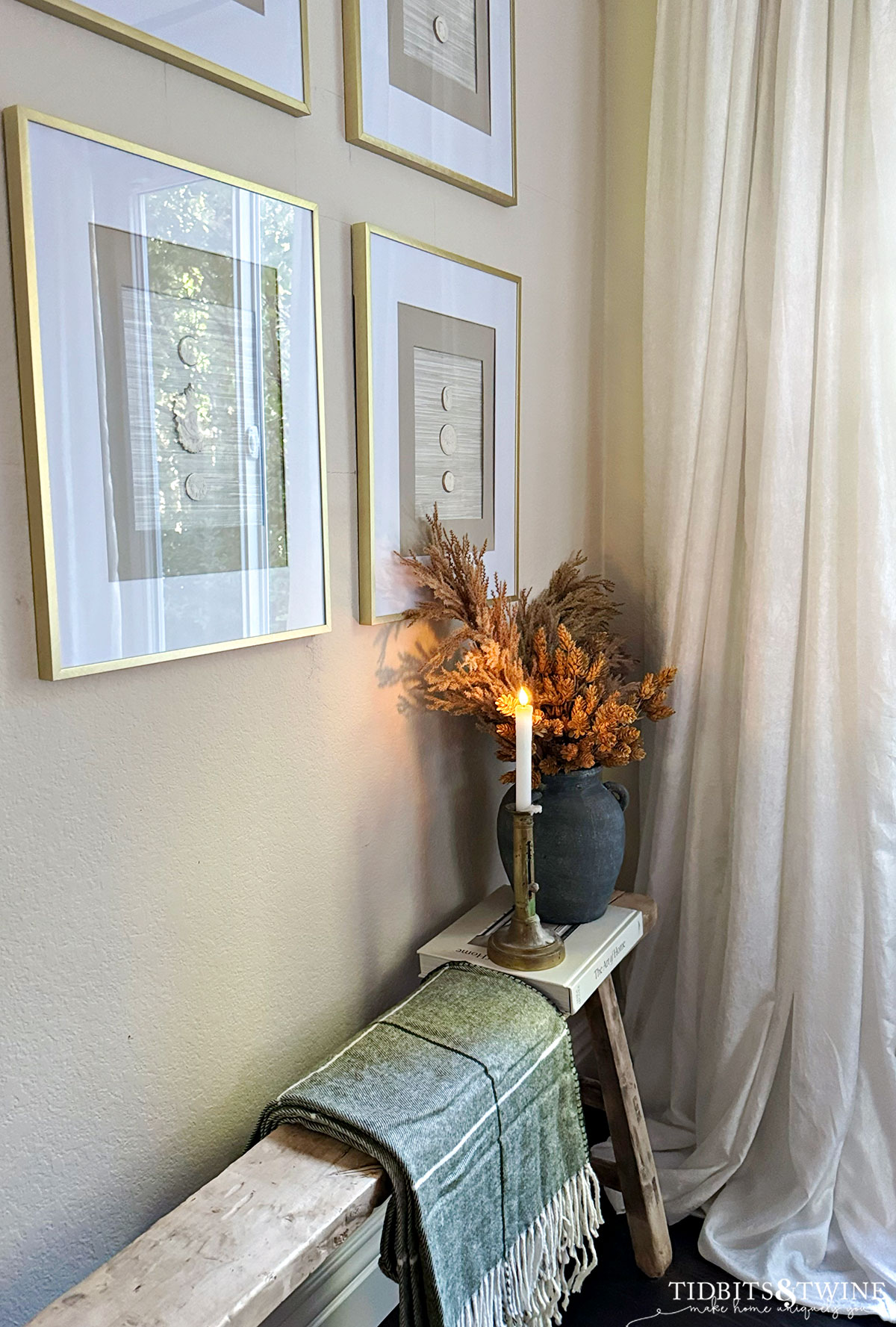
8. Use Repetition to Create Cohesion
Even with a mix of styles and eras, a space feels more unified when there are common threads—like a repeated color, shape, or material. Maybe it’s all vintage brass. Maybe it’s varying shades of green. A little repetition goes a long way in pulling everything together.
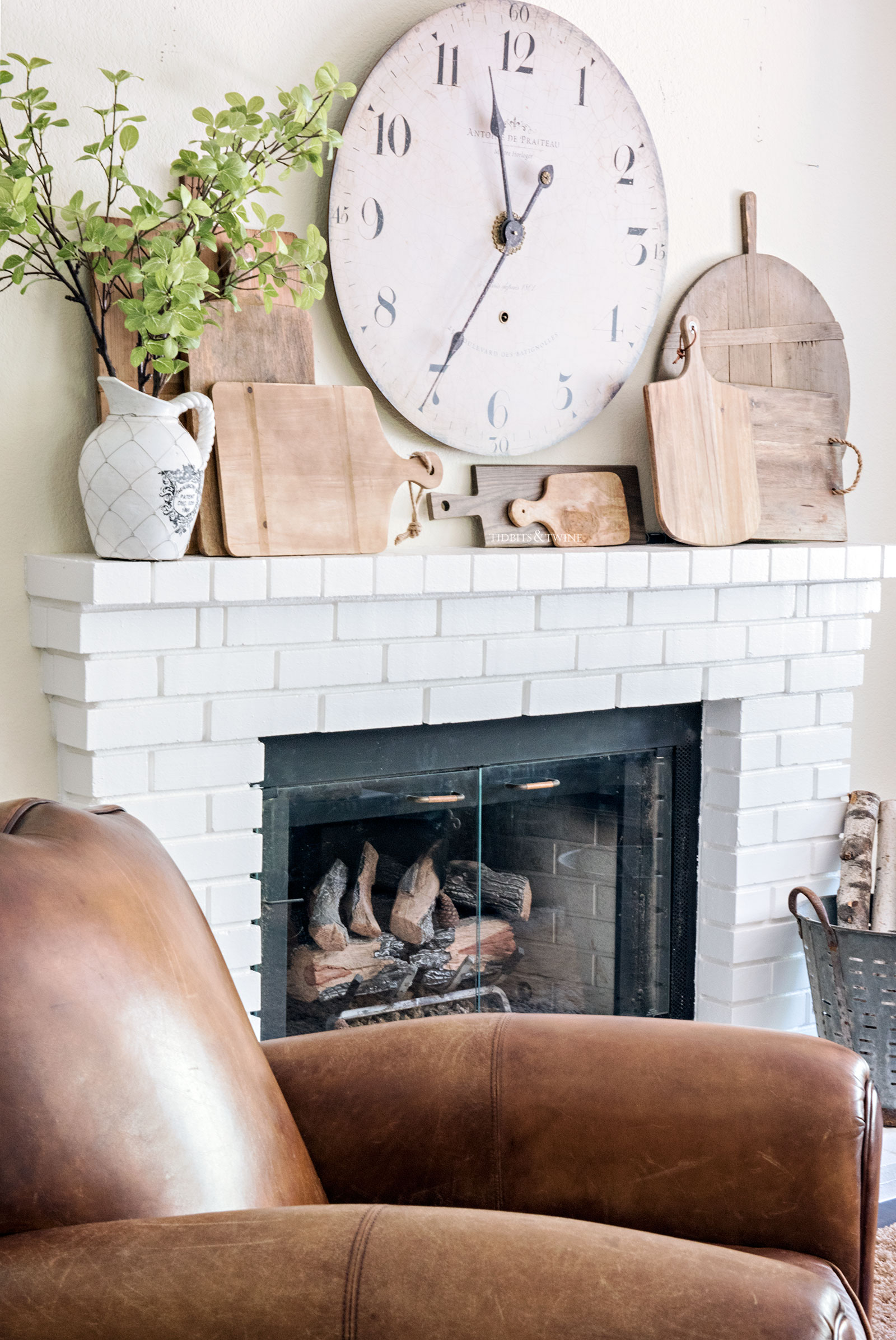
9. Curate, Don’t Accumulate
Just because you love something doesn’t mean it needs to go on display. A collected look isn’t about quantity—it’s about intention. Choose pieces that speak to you, and don’t be afraid to rotate or store others for another season.
The magic happens when you combine select items in meaningful ways. Thoughtful editing helps each piece stand out and keeps your home from feeling overcrowded.
10. Mind the Scale
This one’s easy to overlook, but size matters! A tiny antique chair might look lost next to a large, modern sofa, or a collection of miniature frames might feel like clutter on a spacious wall. Keep an eye on proportions, and don’t be afraid to go bigger with fewer items.
Antique pieces, especially, tend to run smaller in scale—balance them with lighter surroundings or pair with similar-sized pieces.
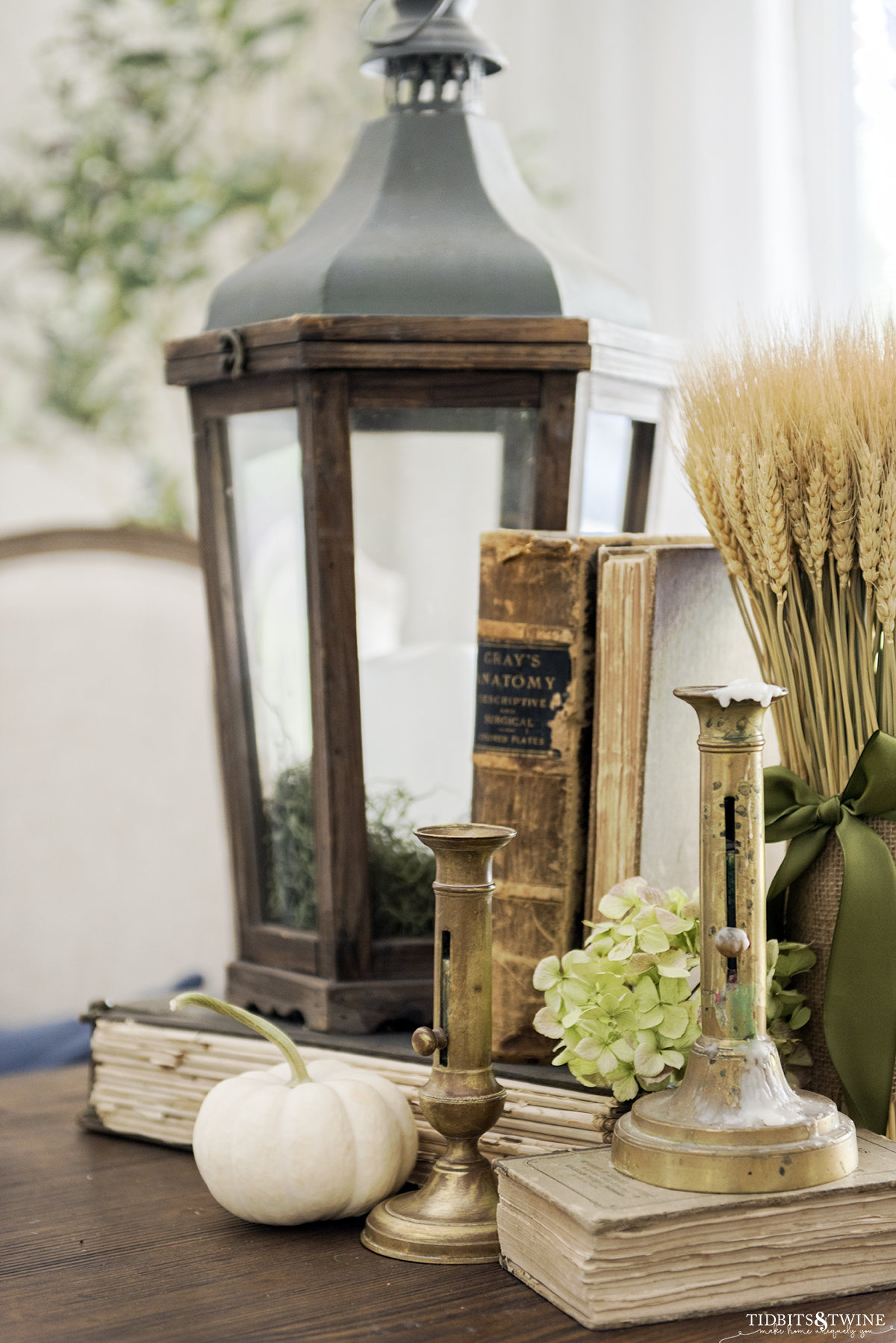
Collected, Not Cluttered: Real-Life Styling Examples
Here are a few easy places to apply these tips:
- Bookshelves: Mix books both vertically and horizontally. Layer in a piece of art, a sculptural object, and a small plant. Leave one or two shelves partially empty.
- Entryway Console: Try a mirror or art as a backdrop, a bowl for keys, a stack of books, and one sculptural item or lamp. Done.
- Coffee Table: Use a tray to group a candle, a vase of fresh (or faux) flowers, and a decorative box or object.
Common Mistakes to Avoid
- Too many small items without grounding elements
- No variation in height or shape
- Ignoring scale (too many tiny or oversized items)
- Lack of editing—everything you own shouldn’t be on display at once!
Final Thoughts
A collected home should feel like a reflection of you—not like a museum or a storage closet. Let your space tell a story, but make sure it’s a story with rhythm, flow, and a bit of breathing room. It’s okay to take your time—building a collected look is a process, and that’s part of what makes it so rewarding.
FAQ
A: Absolutely! Use color, texture, or shape to create common threads between pieces. A collected look thrives on variety—but thrives even more with a little continuity.
A: Step back and squint. If your eye doesn’t know where to land, it’s time to edit. Trust your instincts—and remember that less is often more.
A: Store them safely and rotate seasonally! Not everything needs to be on view all the time to be appreciated.

Join the Community
Let’s keep in touch! Get exclusive artwork plus the latest news delivered directly to your Inbox!

